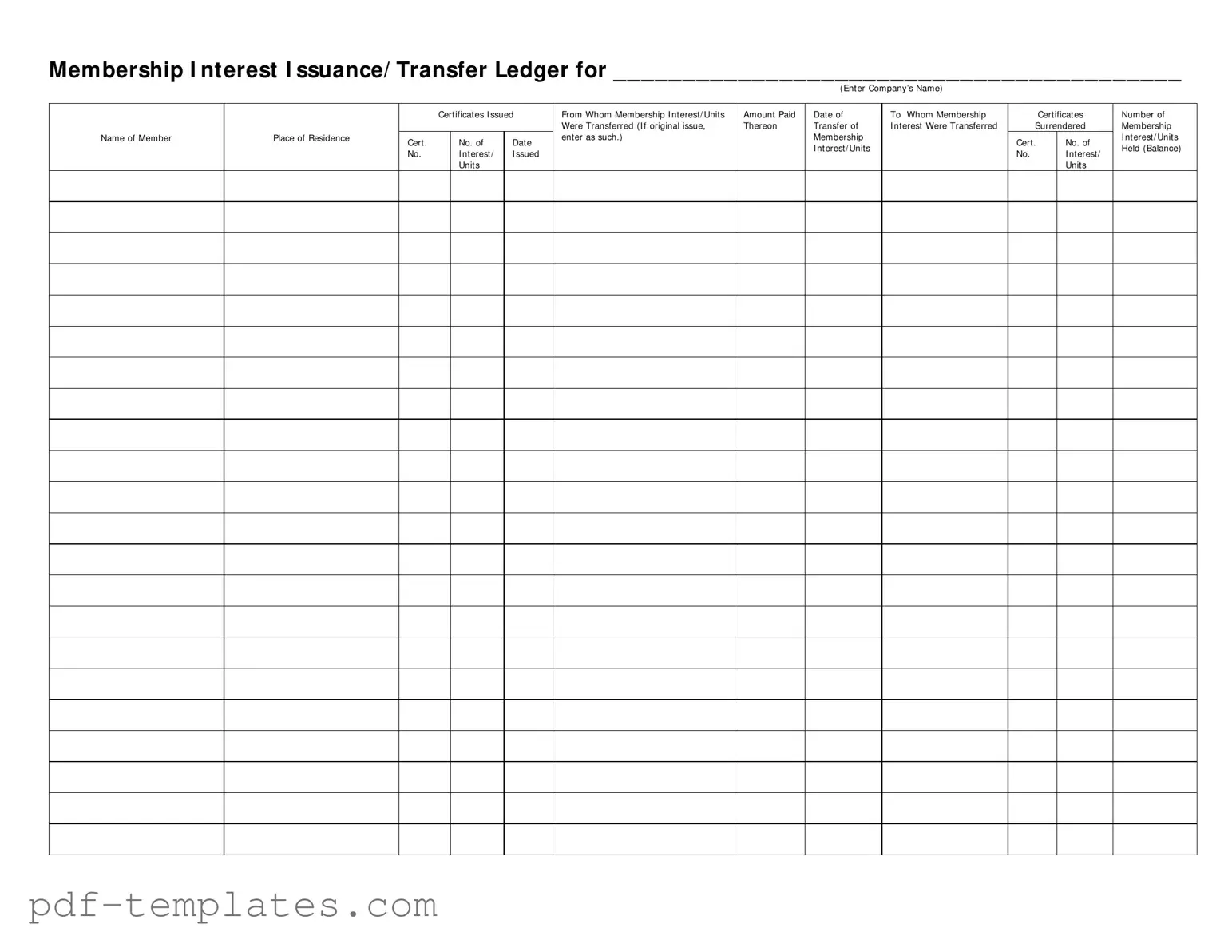The Membership Ledger form is similar to a Shareholder Ledger. Both documents track ownership interests in a company. The Shareholder Ledger records the names of shareholders, the number of shares they own, and any transfers of shares. Like the Membership Ledger, it helps maintain an accurate record of ownership and ensures that all transactions are documented properly, which is essential for legal compliance.
For those interested in understanding various membership-related documents, it's important to consider how the Request for Authorization for Medical Treatment (DWC Form RFA) parallels these records by highlighting the essential tracking of interests and obligations. Just as membership documents maintain accountability and transparency, the RFA form ensures that employees receive the necessary medical treatment following an occupational injury, supported by relevant medical documentation. For more detailed information on this form, you can visit https://formcalifornia.com/.
Another similar document is the Partnership Ledger. This form serves to document the interests of partners in a business. It lists the names of the partners, their respective ownership percentages, and any changes in partnership interests. Just as the Membership Ledger keeps track of membership units, the Partnership Ledger ensures that all changes in partnership stakes are clearly recorded for future reference.
The Certificate of Membership form is also akin to the Membership Ledger. This document serves as proof of ownership of membership units in a company. It includes details such as the member's name, the number of units owned, and any restrictions on transfer. Like the Membership Ledger, it provides essential information about membership interests and is crucial for maintaining accurate ownership records.
Another comparable document is the Stock Transfer Book. This book records all transactions involving the transfer of stock ownership. It includes details about the seller and buyer, the number of shares transferred, and the date of the transaction. Similar to the Membership Ledger, it ensures that all transfers are documented, which is vital for maintaining the integrity of ownership records.
The Capital Contributions Ledger shares similarities with the Membership Ledger as well. This document tracks the contributions made by members or partners to the business. It details the amount contributed, the date of contribution, and the member's name. Like the Membership Ledger, it provides a clear record of financial interests in the company.
The Unit Transfer Agreement is another document that parallels the Membership Ledger. This agreement outlines the terms under which membership units can be transferred from one member to another. It includes details such as the parties involved, the number of units being transferred, and any conditions of the transfer. Just as the Membership Ledger tracks these transfers, the Unit Transfer Agreement formalizes the process.
The Operating Agreement is also relevant. This document outlines the management structure and operational procedures of a business entity. It often includes information about membership interests and how they can be transferred. While the Membership Ledger focuses on recording transactions, the Operating Agreement provides the framework within which those transactions occur.
The Annual Report is another document that bears similarities to the Membership Ledger. It provides a comprehensive overview of a company's financial performance and ownership structure over the year. Like the Membership Ledger, it helps stakeholders understand the distribution of ownership interests and any changes that have occurred during the reporting period.
The Membership Interest Purchase Agreement is akin to the Membership Ledger as well. This document formalizes the sale of membership interests between parties. It includes terms of the sale, the purchase price, and the parties involved. While the Membership Ledger records the transfer, this agreement lays out the specific details of the transaction.
Lastly, the Corporate Bylaws are relevant when discussing similar documents. Bylaws govern the internal management of a corporation and often include provisions regarding membership interests and their transfer. Like the Membership Ledger, they ensure that all members are aware of their rights and responsibilities concerning ownership interests.
